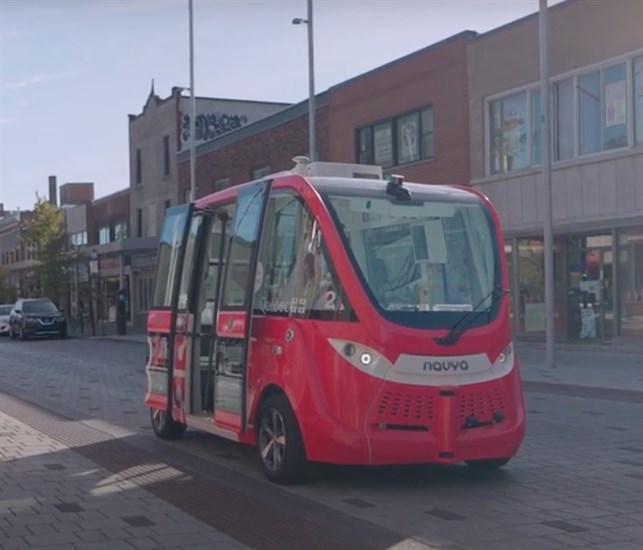Driverless buses on Okanagan Rail Trail in Kelowna being studied
The prospect of futuristic autonomous transport has been in the cards for the Okanagan Rail Trail in Kelowna since 2022.
In February during his State of the City address, Kelowna Mayor Tom Dyas listed a transit plan for the rail trail as one of the city’s key investments.
“The city is investing in a traffic mobility plan with UBCO to explore opportunities to connect the university, airport and downtown Kelowna via the Okanagan Rail Trail corridor,” Dyas said.
The plan has been in the works for two years.
READ MORE: Kelowna's mayor predicts 'vibrant and prosperous’ city in 2024
In 2022, the city partnered with experts from UBC Okanagan to research options for a multi-modal corridor, which would see driverless electric vehicles transporting residents along the rail trail.
In October 2023, the research group acquired a little over $300,000 in funding from the Natural Sciences and Engineering Research Council of Canada and the non-profit national research organization Mitacs, as well as other avenues, to get started on researching the feasibility of this plan.
“The Okanagan Rail trail is a critical infrastructure. It's a regional infrastructure that connects the region from downtown (Kelowna) to Lake Country,” Dr. Mahmudur Fatmi, associate professor in the UBCO School of Engineering, told iNFOnews.ca. “But our scope is within the city of Kelowna and if we keep the scope within the city of Kelowna it connects very critical destinations like the airport, UBC Okanagan and downtown.”
Given the prime position of the rail trail, researchers and the city want to find out if a faster-shared mode of transport could be an option.
READ MORE: Driverless bus could become part of the Rail Trail in Kelowna
Students conducted a survey in 2022, in which they asked more than 700 rail trail pedestrians, cyclists and users for their opinions on an updated corridor.
The survey found that 55% of rail trail users would support having autonomous transit along the corridor.
Others opposed the idea, as they were concerned there would be less space on the trail for cyclists and pedestrians.
“People are generally interested, but not interested in giving away their current space for active transportation,” Fatmi said.
READ MORE: 'Just normal people like everybody else': The reality of homelessness in Kelowna's tent city
From the survey, researchers also concluded that students and young people would be most likely to use the autonomous transit.
Having secured funding for the project, Fatmi and his team will now look into life-cycle costs and environmental aspects of the proposed autonomous transport, as well as create a simulation model over the next two years.
The current team is made up of multiple UBCO professors, two PhD students and a master’s student.
“It's a big research project,” Fatmi said. “There is no doubt there is a lot of opportunity there.”
To contact a reporter for this story, email Georgina Whitehouse or call 250-864-7494 or email the editor. You can also submit photos, videos or news tips to the newsroom and be entered to win a monthly prize draw.
We welcome your comments and opinions on our stories but play nice. We won't censor or delete comments unless they contain off-topic statements or links, unnecessary vulgarity, false facts, spam or obviously fake profiles. If you have any concerns about what you see in comments, email the editor in the link above. SUBSCRIBE to our awesome newsletter here.




